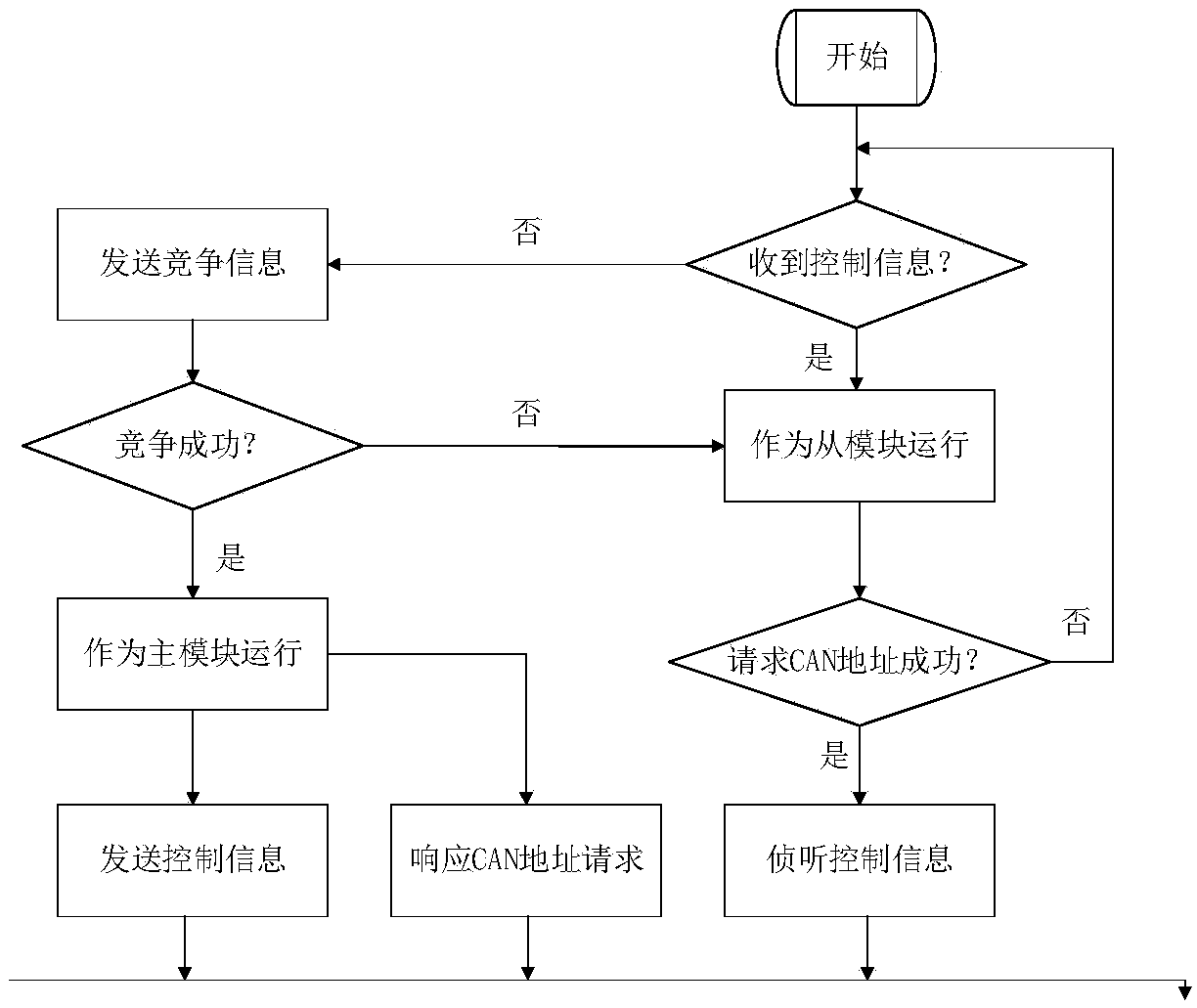CAN bus address allocation method and device based on one-master multi-slave module
A technology of CAN bus and distribution method, applied in the direction of electrical components, transmission systems, etc., can solve the problems of inability to satisfy the indiscriminate competition of modules, and the address distribution requirements of modular equipment plug-and-play, etc., so as to improve reliability and safety effects
- Summary
- Abstract
- Description
- Claims
- Application Information
AI Technical Summary
Problems solved by technology
Method used
Image
Examples
Embodiment Construction
[0039] Embodiments of the present invention will be described in detail below in conjunction with the accompanying drawings.
[0040] The CAN bus address allocation method based on a master multi-slave module provided by an embodiment of the present invention comprises the following steps:
[0041] Step S1: A unique device ID number is pre-stored on each module. The ID number is a 20-bit device ID number generated according to the current UTC time and the DSP hardware ID number used when each module is debugged at the factory. The device ID number of each module is unique.
[0042] Step S2: After each module starts, it listens to the CAN bus to compete for the election of the master module, and stores all module device ID numbers, and the master module assigns CAN addresses to each slave module;
[0043] After each module is powered on at the same time, it will first listen to the bus, and if it does not receive a control message from the main module within a period of time, ...
PUM
 Login to View More
Login to View More Abstract
Description
Claims
Application Information
 Login to View More
Login to View More - R&D
- Intellectual Property
- Life Sciences
- Materials
- Tech Scout
- Unparalleled Data Quality
- Higher Quality Content
- 60% Fewer Hallucinations
Browse by: Latest US Patents, China's latest patents, Technical Efficacy Thesaurus, Application Domain, Technology Topic, Popular Technical Reports.
© 2025 PatSnap. All rights reserved.Legal|Privacy policy|Modern Slavery Act Transparency Statement|Sitemap|About US| Contact US: help@patsnap.com



